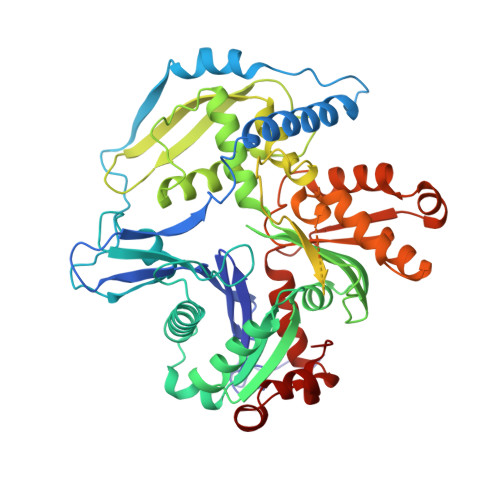Structure of Actin-related protein 8 and its contribution to nucleosome binding.
Gerhold, C.B., Winkler, D.D., Lakomek, K., Seifert, F.U., Fenn, S., Kessler, B., Witte, G., Luger, K., Hopfner, K.P.(2012) Nucleic Acids Res 40: 11036-11046
- PubMed: 22977180
- DOI: https://doi.org/10.1093/nar/gks842
- Primary Citation of Related Structures:
4FO0 - PubMed Abstract:
Nuclear actin-related proteins (Arps) are subunits of several chromatin remodelers, but their molecular functions within these complexes are unclear. We report the crystal structure of the INO80 complex subunit Arp8 in its ATP-bound form. Human Arp8 has several insertions in the conserved actin fold that explain its inability to polymerize. Most remarkably, one insertion wraps over the active site cleft and appears to rigidify the domain architecture, while active site features shared with actin suggest an allosterically controlled ATPase activity. Quantitative binding studies with nucleosomes and histone complexes reveal that Arp8 and the Arp8-Arp4-actin-HSA sub-complex of INO80 strongly prefer nucleosomes and H3-H4 tetramers over H2A-H2B dimers, suggesting that Arp8 functions as a nucleosome recognition module. In contrast, Arp4 prefers free (H3-H4)(2) over nucleosomes and may serve remodelers through binding to (dis)assembly intermediates in the remodeling reaction.
- Department of Biochemistry, Gene Center of Ludwig-Maximilians-University Munich, Feodor-Lynen-Str. 25, D-81377 Munich, Germany.
Organizational Affiliation:




















